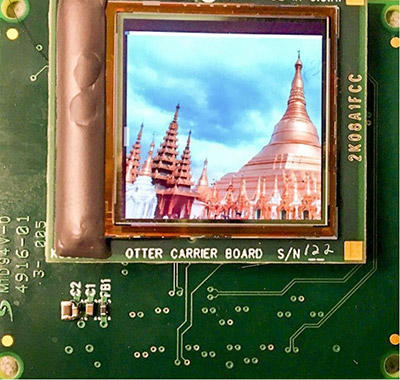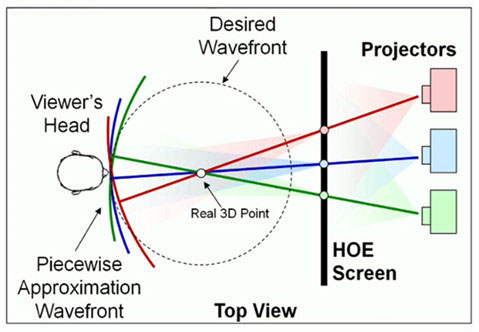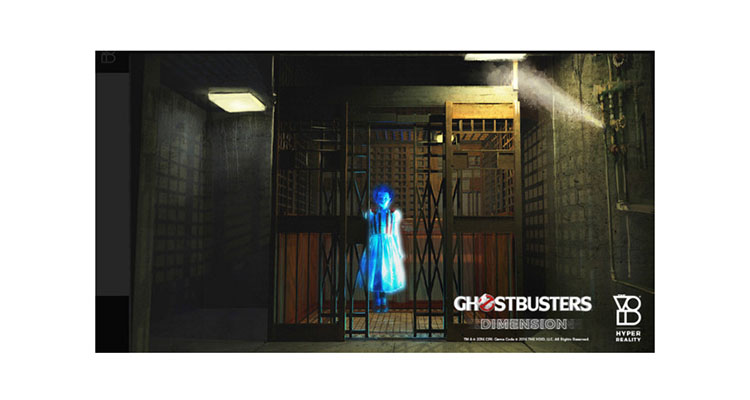An Air of Excitement in a Tough Market
By Chris Chinnock
Insight Media, Senior Analyst and Editor
 I am writing this after two days of Projection Summit here in Orlando, Florida on the evening before the opening of InfoComm 2009. This has been a tough year for almost every company and trade shows alike. Over the next couple of days we will report on the mood and news from InfoComm. What I can report tonight is that the mood at Projection Summit was definitely upbeat.
I am writing this after two days of Projection Summit here in Orlando, Florida on the evening before the opening of InfoComm 2009. This has been a tough year for almost every company and trade shows alike. Over the next couple of days we will report on the mood and news from InfoComm. What I can report tonight is that the mood at Projection Summit was definitely upbeat.
That’s not to say that all is rosy, especially for the mainstream part of the projection industry. One session this morning called, “Recession Strategies for the ProAV Industry” provided unvarnished comments on some of the challenges the industry faces. There are big problems in the channel, says Gary Kayye of rAVe Publications, who noted that the once symbiotic relationship that dealers and system integrators had with projector manufacturers has turned sour. As projector manufacturers set up direct sales channels, that drove down prices and margins, differentiation was minimized, and dealers found that the projector had become a commodity box – not something that led the system integration sale. Now, with sales down or flat, the projector makers are trying to target new higher end segments and reenergize their sales channels. But this is going to be met with some resistance. “Some system intergators are so turned off by manufacturers they won’t even talk to them,” says Kayye.
Rajeev Mishra of Epson noted that during this downturn, end users have backed off of more fully-featured models creating a new lower baseline for what they want out of a projector – a dangerous thing in his mind.
Chris McIntyre-Brown of FutureSource Consulting said companies have reduced headcounts, eliminated supply chain partners, consolidated professional and consumer operations and tried to make logistical improvements to ride out the downturn. Unit sales will be flat in 2009 then rise at single digit rates, but revenue has already peaked.
Sounds kind of gloomy, but there are clearly areas of opportunity that has some players excited. For example, this recession may finally bring some much need consolidation to the projection industry, which is likely to be a good thing long term.
And, some providers never lost their way, says Kayye, who pointed to Crestron, Extron, Epson and Christie Digital as companies that have continued to support their dealers and have retained key IP to make these companies and their partners valuable to the end users.
“Many companies have missed opportunities to create bigger, valued-added businesses,” says Kayye. As an example, he point to the addition of networking ports to projectors. “This is a way to be able to manage huge number of projectors to provide content, networking, maintenance and more, but only a few have capitalized on this.”
Rajeev Mishra of Epson noted how his company is trying to focus on user or behavior-based innovation to find new ways to bring value to customers, and ultimately, to expand the market, not steal share from competitors. They have been focused on understanding how customers use projectors and thinking of better ways to add features and benefits. “The old education paradigm was the “sage on the stage,” said Mishra referring to the teacher in front of the blackborad. “Now it is the sage on the side as students are doing interactive learning and teaching the teacher as well as other students.”
He also sees great opportunities for projectors in collaborative communications and digital signage – areas that have been dominated by flat panels so far.
“The Apple ipod changed behavior and the Apple apps phenomena is doing it again. As an industry, we need to be much more innovative and not just focus on resolution and lumens.”
Kayye agreed, he thinks that displays need to become invisible yet always accessible, just as in the movie, Minority Report.
This was some of the discussion at just one of the eight sessions at Projection Summit this year. Other sessions looked at LED and laser devices and components, low and high lumen LED/Laser projection systems, multi-megapixel displays, 3D and display metrology. And many of the 20 exhibits showed products in these same categories.
Overall, I was encouraged to see many more LED and laser-based projectors this year at Projection Summit and to hear a lot of dialog about the near term opportunities for pico projectors in consumer and professional markets. The potential to sell tens of millions of pico projectors has caught the attention of many, and skeptics are taking a second look. And in the high end, laser sources and the expanding range of solutions being created by scaling, warping and geometry correction engines is sure to open up a Pandora’s box of very cool new products over the next few years.
So, the two ends of the projection market are clearly exciting technology and innovation-driven areas. The middle mainstream market is a big bogged down in technology innovation, so we need to find new ways to bundle services, products, content, etc. in ways that make projection a necessary and vital part of the solution – not a commodity afterthought.
Our aim with Projection Summit has always been to provide a platform that provides a look at where the projection industry is going over the next few years. It is a place where strategic decisions are made, and based upon some of the feedback received; I think we did a pretty good job of accomplishing this mission.
We will have full coverage in our newsletters and the proceedings will be available to purchase next week.
This article was reprinted with permission from Insight Media.





